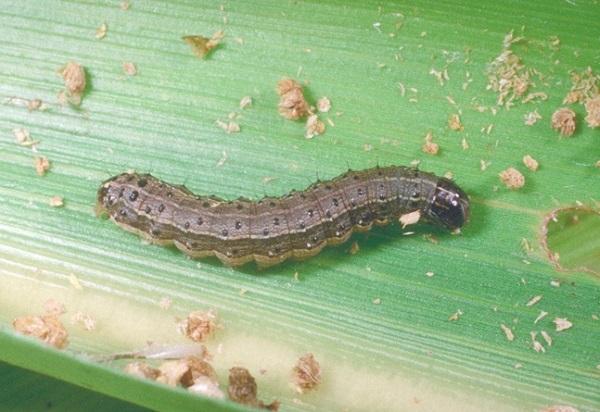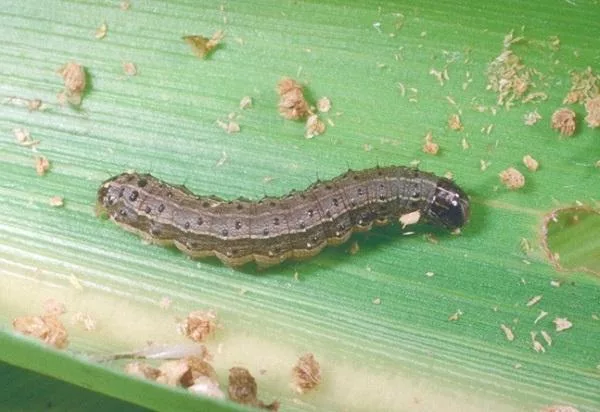Although usually a production agriculture problem, Fall Armyworm is reminding many gardeners that home lawns are also on the menu. Fescue, bermudagrass, ryegrass, and bluegrass are among their favored meals. Early detection and management is key to maintaining your lawn and avoiding a complete renovation of your turf this fall.
Fall armyworms are voracious feeders consuming all green above-ground plant parts often leading to plant death or stunting the growth of grasses. The damage can occur, quite literally, overnight. This is due to their habit of feeding as a large group, hence the name armyworm. During the hottest part of the day, they spend their time down near the soil in the shade no doubt plotting which tasty green patches of lawn to devour next.
The fall armyworm is actually a caterpillar, which is the larval stage of a small white and gray moth. The moths, which do not overwinter here, migrate to our area each year from the south. There are two distinct populations one from Florida and the Caribbean, but those found in Kentucky hail from near Corpus Christi, TX. Each female moth lays about 1,000 egg clusters in masses of 50 up to several hundred. These hatch in a few days into small caterpillars light-colored at first and then maturing to a green, brown, or black caterpillar. The mature caterpillars are recognized by a longitudinal, black stripe along each side of their body and an inverted “Y” shape on the top of their head. When these larvae have had their fill, they will pupate and change into adult moths which lay the eggs. The whole cycle can occur in about 28 days.

In most years, parasitic enemies help keep fall armyworm larvae down to moderate numbers. Also, the hot, dry weather recently can intensify fall armyworm problems in home lawns, especially on irrigated, green turf to a level larger than the natural enemies can handle.
If you are unsure you have fall armyworm, look for brown circular patches where the caterpillars have eaten all the grass. You can soak a small area of turf with a soapy mixture of dishwashing liquid (about 1 ounce in a gallon of water). This will bring the armyworms to the surface in about 10 minutes. On a lawn, finding one armyworm larva per square foot is enough to warrant control.
Once the armyworm has been identified, control is relatively simple. Consider cutting the lawn prior to treatment for better penetration of the pesticide. A light irrigation prior to treatment may also help. Time your treatment to when armyworms are most active, late in the day, at night, or early morning. Look for products containing bifenthrin (Talstar), cyfluthrin (Tempo), or carbaryl (Sevin) and labeled for turf use. These will do a good job provided they are applied correctly, so be sure to read and follow the label.
Fall armyworms are intense grazers and tall fescue lawns are very favorable. Compared to warm-season grasses like Bermuda, fescue will not regenerate as readily. Expect lawn damage to continue until the first frost and to do some overseeding this fall to repair the damage.
Interested in learning more about landscape and lawn care? Why not join the Master Gardener Program. Training in Christian County starts September 13. Contact the Christian County Extension Office for an application at 270-886-6328.
— Kelly Jackson, Christian County Extension Agent






